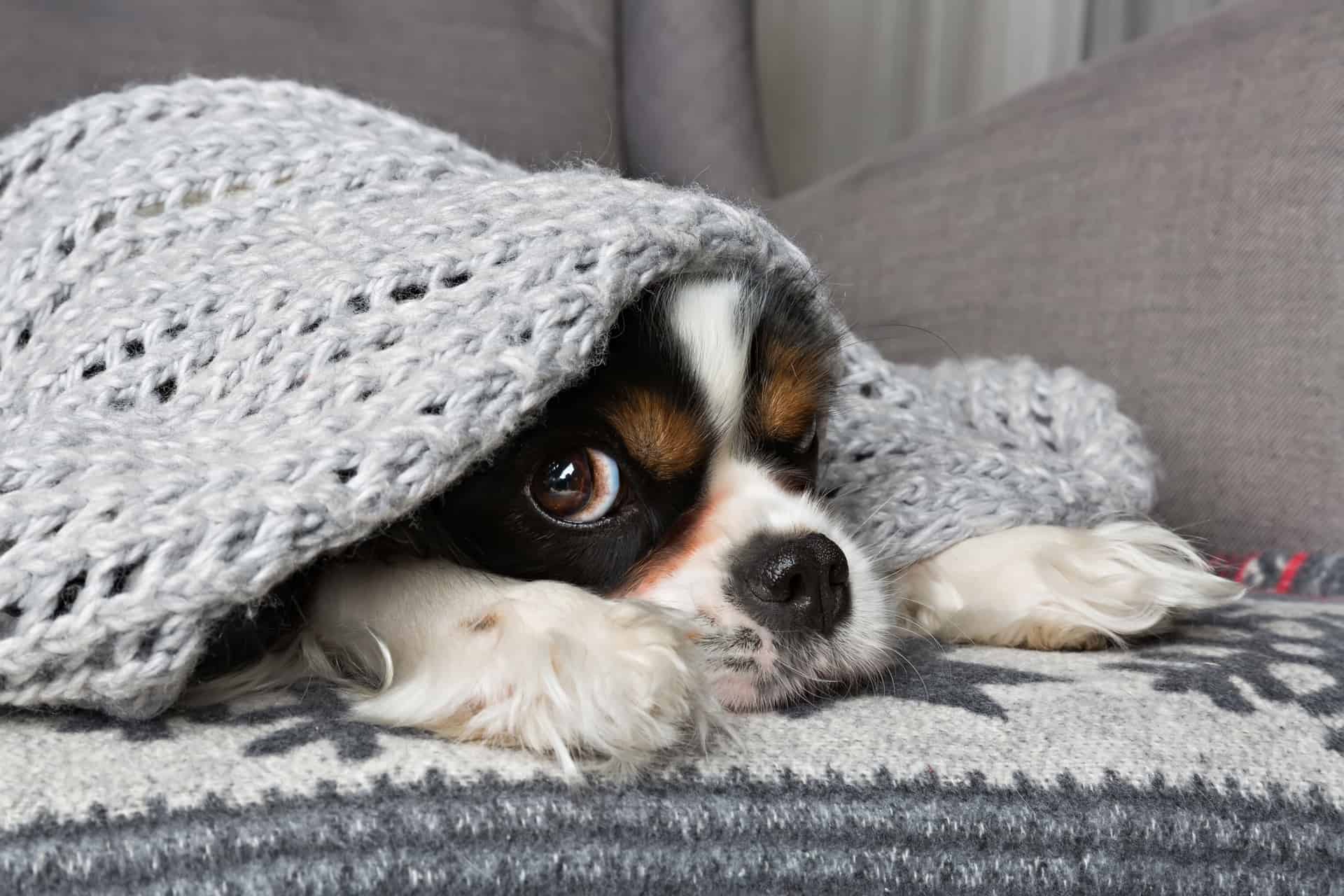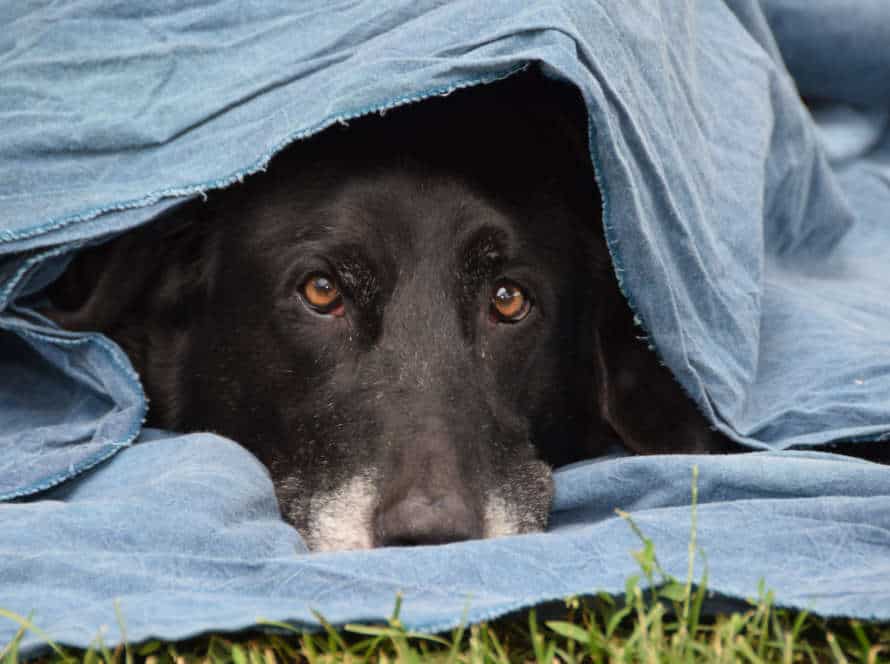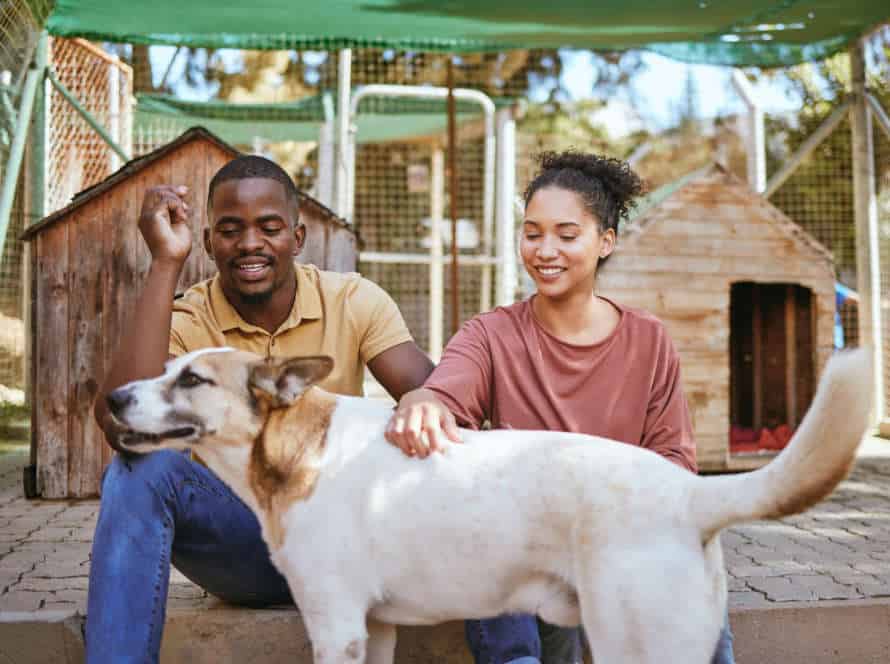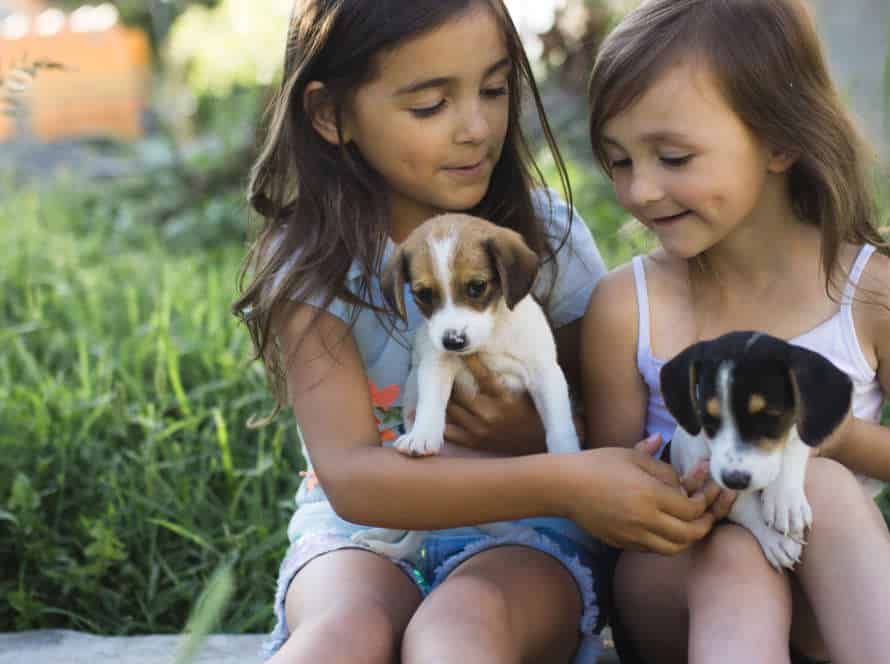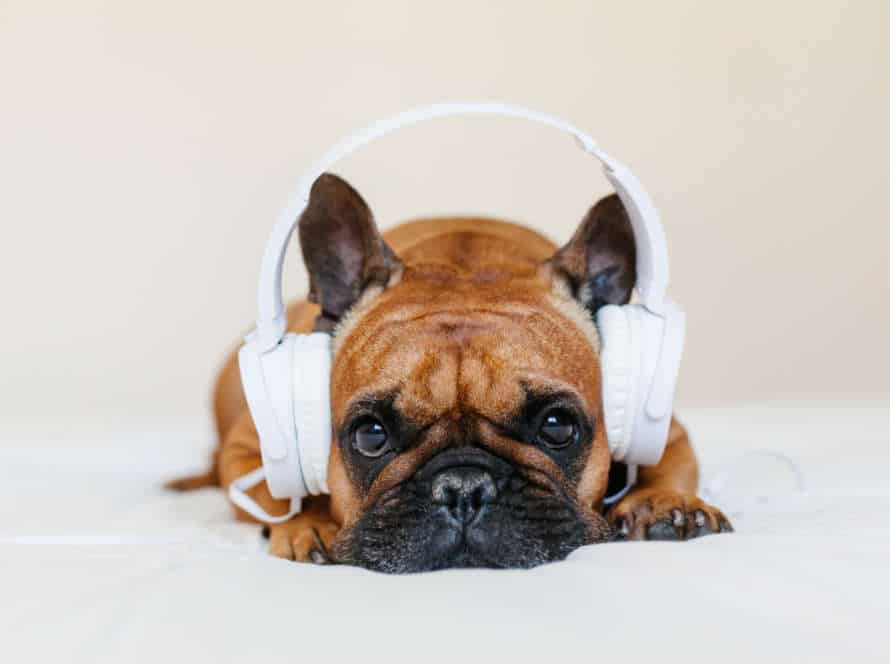Confidence-Building Activities for Fearful Dogs
Fearful dogs can gain confidence with activities that help them conquer their worries. Here are some activities that could be of help:
- Agility courses – A great way to create trust and confidence between dog and owner.
- Playdates with confident dogs – Regular playdates with confident dogs can give fearful dogs a guide.
- New surroundings – Take your fearful dog for walks in different places to get them used to new sights, sounds, and smells.
- Dog trick training – Teach your dog tricks to help build up their self-belief and make training enjoyable.
These activities require time and persistence, but can really make a huge difference for your fearful dog’s assurance and wellbeing.
Understanding Fearful Dogs
Fearful dogs need extra care and comprehension. Fear is a natural emotion for canines, and it can show in various ways. Knowing how fear affects your pooch’s conduct is key to helping your pup manage their fears. Here, we will discuss understanding your frightened doggy and offer activities that help boost their self-confidence.
Identifying the Signs of Fear and Anxiety in Dogs
It’s key to spot signs of fear and anxiety in dogs. These are some common signals: shaking, panting, drooling, yawning, making noise, cringing, hiding, being aggressive, destroying stuff, and not making eye contact.
For helping scared dogs, here are some ideas:
- Play games
- Introduce new toys
- Create a nice setting
- Do scent work
- Teach obedience
- Socialize slowly with other animals and people
By being patient and consistent, these activities can make your concerned or fearful pup more confident and cheerful.
Causes of Fear and Anxiety in Dogs
Fear and anxiety in dogs can make them scared, anxious, and stressed. Causes include:
- lack of socialization during the important 3-14 weeks
- bad experiences or trauma
- certain breeds
- health issues or pain
- changes in the environment
To build their confidence and help them overcome fears, consider the following tips:
- Take them on short, frequent walks
- Use positive reinforcement training
- Play with friendly dogs
- Praise and reward good behavior
Be patient, consistent, and understanding of your dog’s fears to help them live happily.
Impact of Fear and Anxiety on Dogs
Fear and anxiety can seriously affect a pup’s behavior and overall health. Knowing how fear affects dogs and utilizing confidence-building activities can help your pooch feel more relaxed and secure.
Signs of fear and anxiety in dogs include:
- Excessive barking/whining
- Trembling/shut-down behavior
- Destructive actions
Here are some activities to help your pup overcome their fears:
- Obedience training – Provides structure, predictability & consistency, helping a dog’s confidence & sense of control.
- Exercise – Helps produce endorphins which lessen stress/anxiety.
- Puzzle toys – Mental stimulation, builds confidence & problem-solving skills.
- Desensitization & counter-conditioning – Gradually introduces pup to fear triggers in a controlled & positive way.
Patience & consistency are essential when dealing with fearful dogs. With time & effort, you can help your pup build confidence & overcome their fears.
Confidence Building Exercises
Boost your pup’s confidence! Introduce activities into their schedule to help them feel more at ease. These exercises can make a huge difference in their life.
Here’s some of the best activities to help your dog gain confidence:
Socialization
Socialization is a must for fearful dogs. It increases their confidence and makes life better. Confidence-building activities can help these pooches overcome anxiety and form positive relationships with their environment. Here are some effective activities for scared doggies:
- Obedience training – Teaching them basic commands gives them the feeling of structure and control.
- Desensitization – Gradually exposing them to situations that scare them can help them get over their fears.
- Agility training – Ramps, jumps, and tunnels provide physical and mental stimulation, boosting their self-esteem.
- Playtime with other dogs – Supervised playtime with well-socialized canines helps fearful pooches learn social skills and become more confident around other animals.
- Nose work training – Helping them use their sense of smell to find hidden treats or toys gives them mental exercise and a sense of achievement.
Exposure to New People, Dogs, and Environments
Give your scared pup exposure to new people, doggos, and environments! It’s a great way to build their confidence. Here are a few activities to try:
- Socialization walks – Take your pup out in diverse settings. They’ll become familiar with new places and people.
- Agility training – Show them how to go through obstacles in a safe, controlled environment.
- Playdates – Arrange playdates with other friendly, confident dogs. Let your pup learn from them!
- Obedience training – Teach basic commands and tricks. This helps them feel confident and behaved.
By exposing your pup to different things, you can build their confidence and reduce fear in new situations.
Positive Reinforcement Techniques
Positive reinforcement is a great way to help fearful dogs build confidence. Here are some confidence-building exercises you can do:
- Clicker training. Use a clicker to mark desired behaviour, then reward with treats or praise. This teaches dogs that good behaviour will be rewarded.
- Playtime. Games like fetch and tug-of-war help build confidence and give them a sense of achievement.
- Obstacle courses. Set up tires, cones or hurdles for your dog to complete. This develops motor skills and their self-confidence.
- Desensitization. Introduce new situations, sounds or people in a safe environment to reduce anxiety.
Building confidence takes time and patience. Start with easy tasks and gradually increase difficulty. With consistent positive reinforcement, your fearful dog can become confident and happy!
Enrichment Activities
Enrichment activities are great for building confidence in fearful dogs. They provide mental & physical stimulation, and help dogs get over their fears.
Here are some confidence-building activities:
- Food puzzles! Start easy, and increase the difficulty as your dog gets better.
- Agility training: Teach your dog to navigate obstacles in a controlled environment. Start simple & increase the difficulty as they improve.
- Nose work: Searching for scents helps build confidence & focus. Start easy & increase the difficulty as they get better.
- Socialization: Gradually expose your dog to new experiences & environments. Do this with caution, care & patience.
Give your dog interactive toys
Interactive toys are awesome for boosting the confidence of fearful dogs. They give them a feeling of control and success. Here are some interactive toy examples:
- Puzzle feeders – they make dogs use their problem-solving skills and curiosity to get their food or treats.
- Interactive balls – they give out treats as the pup plays with them, making them stay active and interested.
- Tug toys – they let dogs have a healthy fight and show off their strength.
- Kong toys – they can be loaded with treats or peanut butter. This entertains the dog and helps reduce anxiety.
Pro Tip: Interactive toys are a great way to train dogs with separation anxiety. They help them focus and cope with you being away.
Provide opportunities for scent work
Scent work is great for building confidence in scared dogs and keeping them mentally active. Here are two ways to do it:
- Snuffle Mats – Fleece mats with hidden treats. Dogs must use their noses to find the treats, so they can use their senses and build confidence.
- Scent Trail – Sprinkle small pieces of treats or kibble on the floor (in or outside). Start easy, then gradually make it harder. This helps dogs build confidence, focus, and mental stimulation. It can even reduce fearful behavior in the long run.
Training
Train your pup with confidence-building activities to help them beat their fears and anxiety. Here are some ideas:
- Obstacle course: Make an indoor or outdoor course with hurdles to jump over, crawl under, and weave through. Give treats and compliments as they go!
- Hide-and-seek: Place a treat or toy somewhere in the yard or home and watch as your pup searches for it.
- Clicker training: Use this positive reinforcement technique to link sounds with rewards when you give treats.
- Socialization: Taking your pup to new people, places, and experiences can boost their confidence and reduce anxiety. Visit the dog park or attend a training class.
These exercises can help your pup gain self-assurance and conquer their worries gradually.
Obedience Training
Obedience training is a must for a dog’s life. It can be hard for those with fear and confidence issues though. To help, here are 5 confidence-building activities:
- Agility class: Teach dogs to get around obstacles in a safe place.
- Nosework: Train them to find smells. It develops focus and trust.
- Trick training: It’s low-pressure and fun. Dogs learn through positive reinforcement.
- Socialization: Meet other dogs and humans in a positive atmosphere.
- Confidence course: Set up obstacles to boost self-confidence.
By using these, your fearful dog will feel secure and confident.
Trick Training
Fearful dogs can gain from trick training and confidence-building exercises. These activities can help them become more confident and beat their fears.
Here are some tricks and exercises you can do with them:
- Teach them basic commands like “sit,” “down,” and “stay.” This builds up their trust in you.
- Teach them to give you a high-five, shake hands, or play dead. This promotes trust between you and your pet.
- Hide and seek indoors or in a fenced yard. This game builds trust and provides fun.
- Try agility training. It’s fun and helps them navigate obstacles with your guidance.
These exercises make your dog more confident, build trust and make them happy!
Exercise
Exercising is a great way to build confidence in fearful pooches! It can reduce anxiety and give them a boost of self-assurance. Here are some exercises to get your pup feeling more secure:
- Agility Training: This can be an awesome confidence builder for dogs as it challenges them both mentally and physically. Plus, it helps with coordination, balance, and fitness.
- Environmental Enrichment: Keep your pup entertained by offering them new activities that challenge them mentally and physically. Ideas include hiding treats around the house or giving them puzzle toys.
- Clicker Training: Utilize this positive reinforcement technique to build your dog’s confidence and teach them new skills in a pleasant way.
- Obedience Training: This will help to create a positive relationship between you and your pup while also building their confidence and improving their behavior.
- Regular Walks: Make sure to take regular walks with your pup, explore new places, and meet new people and pets. This will help them become more confident and outgoing.
Pro Tip: Always use positive reinforcement when exercising with your dog. This will help to build their confidence and form a trusting bond between you and your furry friend.
Physical Exercise
Physical exercise is key for building confidence in fearful dogs. It can lower stress, anxiety, and create a more confident mindset. Here are some confidence-building activities to try with your pup:
- Interactive play like fetch or tug-of-war. This strengthens the bond between owner and pet, boosting its confidence.
- Agility training. Jumping over hurdles, weaving through poles, running through tunnels. Improves mental and physical abilities, making them more confident.
- Daily walks. Taking your dog to new places. Gives them exposure to new sights and smells, decreasing fear of unfamiliar things.
- Fetching games. Fun games such as “Find the Treat” or “Treasure Hunt.” Increases self-esteem and helps them overcome fear of new experiences.
Mental Stimulation
Mental stimulation is key for building confidence in fearful dogs. Here are some ways to help:
- Agility courses: Train them through obstacles to increase their confidence and reduce anxiety.
- Nose work: Hide treats around the house or teach them scent work. It’s fun, stimulates their natural instincts, and boosts their confidence.
- Puzzle toys: Exercise their brain while offering rewards, which builds confidence and reduces anxiety.
- Obedience training: Consistent obedience training helps them understand expected behaviors. This boosts their confidence and reduces fearfulness.
Pro tip: Combine regular exercise with mental stimulation activities for a healthier, happier, and more confident dog.
Calming Techniques
Fearful dogs need extra help to build their confidence. Training techniques and activities can help. They build trust, reduce anxiety, and make the dog feel secure in the environment.
Here are some calming techniques to help fearful dogs gain confidence:
Massage
Massage is a great technique to calm anxious dogs. It’s a type of touch therapy that soothes fear and induces relaxation.
To provide a calming massage for your fearful dog, here are some tips:
- Find a tranquil and cozy spot where your pup feels secure.
- Use slow and soft strokes, avoiding areas like the spine or back legs.
- Begin with the neck and shoulder area, using gentle pressure with circular motions.
- Move to the back and hindquarters, with longer strokes and slight extra pressure.
- Speak in a gentle voice and give treats to reward good behavior.
- Always stop if your dog appears anxious or uncomfortable.
Aromatherapy
Aromatherapy is a great way to help soothe nervous dogs. Here are three essential oils to try:
- Lavender Oil: It’s known for calming and soothing effects. Add it to bedding, a collar, or mix with water and spray around!
- Chamomile Oil: This natural sedative can help your pup relax. Spray it or use it topically.
- Peppermint Oil: Cooling properties reduce anxiety and stress. Dilute and spray or rub a few drops at the base of the ears.
Pro Tip: Always chat with your vet before using essential oils on your pet – to avoid any adverse reactions.
Music Therapy
Music therapy is a helpful tool for calming down scared dogs. It can also help build their self-belief. Here’s how:
- Slow and steady beats can have a tranquil effect on dogs. This can slow their heart rate and breathing. You can find pre-made playlists or create your own with soothing music.
- Classical music has been shown to be especially calming for dogs.
- Using calming music during positive moments with fearful dogs, like positive reinforcement techniques, can help them link the music to nice experiences.
- Exposure to calming music over time can give anxious dogs more security and increase their confidence.
Seeking Professional Help
Seeking help from a certified dog trainer is important when it comes to fearful dogs. They can create a tailored plan for your pup. They will evaluate your pup’s needs and give you more specific guidance. This will make you feel better about managing their behavior. Plus, they offer exercises and tactics to bolster the pup’s confidence.
Let’s look at the advantages of consulting a professional when dealing with a scared pup:
Consulting with a Local Dog Trainer
Consulting a local dog trainer can really help fearful dogs. Here’s how:
- Assessing the pup’s personality and behavior. A pro can evaluate your dog’s personality and behavior to find why they’re scared, then make a plan just for them.
- Recommending exercises. With the assessment, the trainer can suggest confidence-building activities that’ll help your pooch increase their self-esteem and beat their fears.
- Professional guidance and support. The trainer can monitor your pup’s progress and give tips and advice to ensure the training works.
Overall, consulting a professional dog trainer can make a world of difference for anxious dogs and lead to a healthier, happier, more confident pup.
Working with a Veterinary Behaviorist
When caring for a fearful pup, a veterinary behaviorist can be a great help. They’re vets that specialize in animal behavior and psychology. They can work out the root of your dog’s behavior problems and create a unique plan to solve them.
Here are some things vet behaviorists recommend for scared doggos:
- Get a certified trainer for socilization sessions;
- Try agility classes to build trust;
- Obedience classes for structure and purpose;
- Exercise and play to reduce stress;
- Use positive reinforcement to encourage good behavior.
By following these activities with a vet behaviorist’s help, your furry friend can overcome their fears and learn to trust again!
Conclusion
Stay consistent with positive reinforcement and repetition. This will help your fearful pup build confidence. It may take small steps, but eventually your pup will be able to engage in activities. Be patient and understanding. This will help your dog overcome fear.
Recap of confidence-building activities
Engaging your scared pup in activities that build confidence can make a big difference in helping them get over their worries and improve their overall wellbeing. Try these confidence-building activities with your furry friend:
- Agility Training – It can help build confidence by providing mental and physical stimulation. Plus, it develops balance and coordination while boosting self-esteem.
- Obedience Training – Regular obedience training can help fearful dogs gain confidence. It teaches them new skills, improves their behaviour and rewards them for good behaviour.
- Socialization – Introducing your dog to new people, environments and other dogs in a controlled and positive way helps build their confidence and reduce fear.
- Interactive Playtime – Interactive playtime with toys and games can help boost your pup’s confidence. Plus, it’s a fun way to get them moving.
- Reward-Based Training – Positive reinforcement training reinforces good behaviour and encourages self-confidence in fearful dogs.
Remember, each dog is special and may react differently to different activities. Be patient, positive and consistent with your training, and get professional help if needed.
Importance of addressing fear and anxiety in dogs
Addressing fear and anxiety in dogs is important. If left unchecked, it can become severe and disrupt emotions, affecting their quality of life. Here are some activities to help your anxious pup:
- Socialization: Let your dog explore new places and meet people. The more exposure, the less fearful they’ll be.
- Obedience Training: Teach them simple commands like “sit”, “stay” and “come”. This will strengthen your bond, and they’ll feel purposeful when praised and rewarded.
- Agility Training: Agility training boosts confidence, body awareness, and coordination. It includes hopping through hoops, weaving between cones, and balancing on planks.
- Playtime: Stimulating toys such as puzzles, chew toys, and fetch games channel your pup’s energy positively.
Practice these activities with patience and encouragement. It will build their confidence and improve their quality of life.
Hope and progress for fearful dogs
Helping fearful pooches gain courage takes time. It needs patience and consistency. To aid their security and ease in novel circumstances, try these activities:
- Positive reinforcement training. Use treats, compliments, and rewards to motivate the pup and connect positive experiences with new scenarios.
- Controlled exposure. In a safe, controlled way, introduce your canine to new sights and sounds. Start low and increase intensity gradually.
- Interactional playtime. Have fun with your pup! Play fetch, tug-of-war, or hide and seek to get them both moving and thinking.
- Massage and grooming. Regular grooming and massage will help your doggie to feel more comfortable in their skin.
- Calming aids. Use pheromones, natural supplements, or CBD oil to keep them relaxed in new situations.
Remember, building confidence in a timid pup is a long journey, so be patient and stay focused on their progress. Then you will see the fruit of your labor in a confident, happy pup!
Frequently Asked Questions
Q: Why do dogs need confidence-building activities?
A: Many dogs develop fear or anxiety, which can lead to unwanted behaviors such as aggression, destructive chewing, and running away. Confidence-building activities help dogs feel more secure and comfortable in a variety of situations, reducing their stress levels and improving their overall well-being.
Q: How can I tell if my dog is fearful?
A: Signs of fear in dogs can include trembling, panting, avoiding eye contact, cowering, hiding, and excessive barking or whining. If your dog displays any of these behaviors, it may benefit from confidence-building activities.
Q: What are some examples of confidence-building activities for fearful dogs?
A: Some effective activities include obedience training, agility courses, playing with interactive toys, socializing with other dogs, and getting comfortable with new environments or objects. It’s important to start with activities that are not too overwhelming and gradually work up to more challenging ones.
Q: Can I do confidence-building activities with my dog at home?
A: Yes! There are many simple activities you can do at home to boost your dog’s confidence, such as practicing basic commands, teaching new tricks, and providing puzzle toys. Just be sure to use positive reinforcement and avoid pushing your dog too far out of its comfort zone.
Q: How long does it take to see results from confidence-building activities?
A: The timeline for seeing results can vary depending on the dog’s individual temperament and experiences. Some dogs may show improvements after just a few sessions, while others may need several weeks or months of consistent training and socialization to see significant changes.
Q: Can all dogs benefit from confidence-building activities?
A: Yes, most dogs can benefit from confidence-building activities regardless of their age, breed, or personality. However, it’s important to tailor the activities to each individual dog’s needs and abilities, and to always prioritize its physical and emotional well-being.

